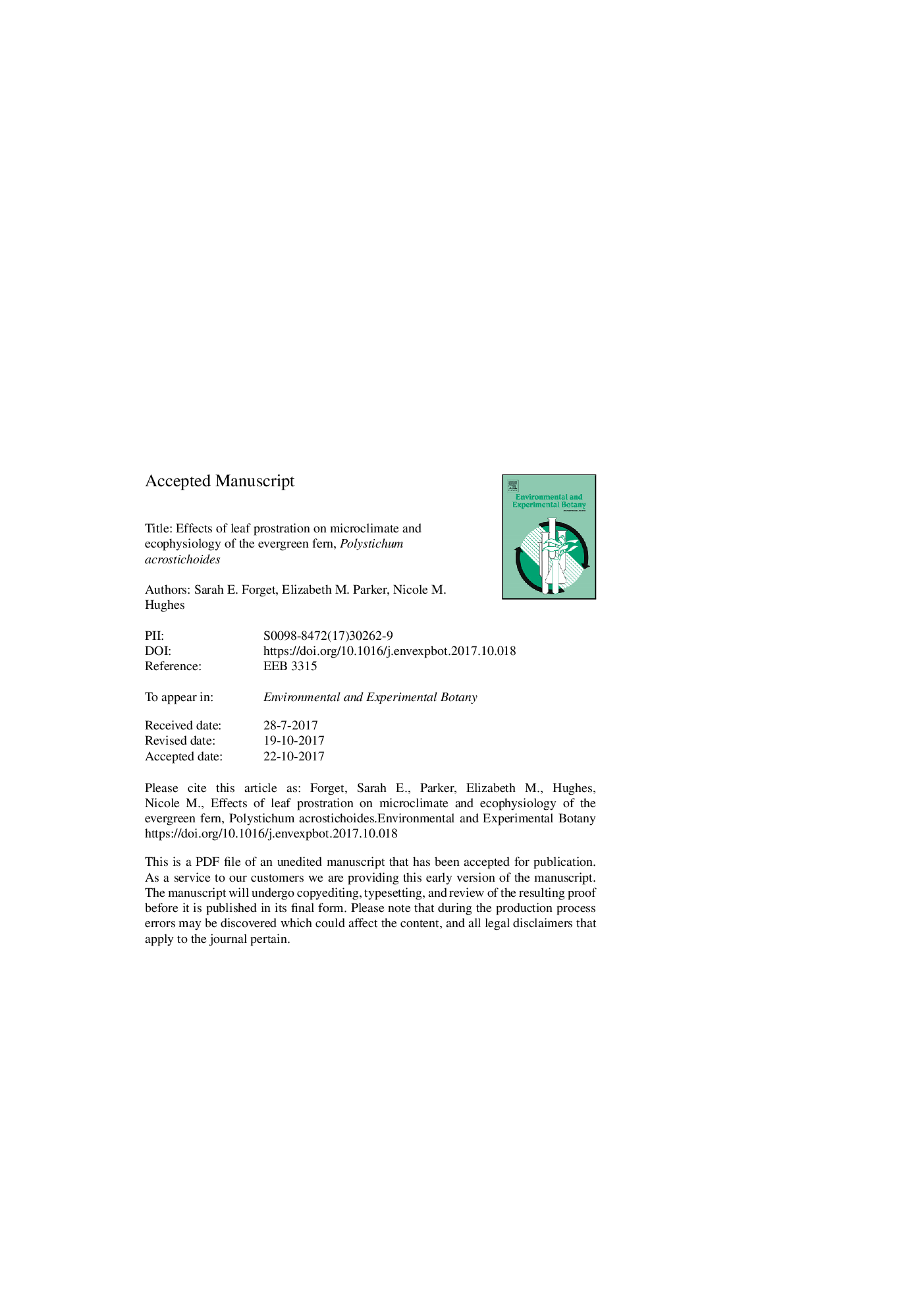| Article ID | Journal | Published Year | Pages | File Type |
|---|---|---|---|---|
| 8886836 | Environmental and Experimental Botany | 2018 | 32 Pages |
Abstract
Fronds of the evergreen fern Polystichum acrostichoides are elevated off the ground during summer, but lie flat against the soil in winter, where they remain prostrate until senescence the following spring. Here we evaluate the physiological consequences of forcing fronds into a position counter to their natural seasonal angles. During the summer, one frond from each of ten plants was forced flat, while during winter, experimental fronds were elevated off the ground. Monthly photosynthetic gas exchange and maximum quantum yield of PSII (Fv/Fm) were measured for upright versus flat leaves during both seasons. Diurnal leaf temperatures and microclimate of sample plants were also monitored using thermocouples and micrometeorological sensors. Forced flattening during summer reduced Fv/Fm, but did not have significant impacts on photosynthetic gas exchange in understory light conditions. Flat leaves were slightly (â¼1 °C) cooler than upright leaves in shade, but exhibited dramatic warming (up to 14 °C above air temperature) during sunflecks and sunpatches. However, during summer when the canopy was intact, such events were rare. During winter the consequences of altered leaf angle were more severe. Upright leaves exhibited reduced photosynthesis, stomatal conductance, evapotranspiration, and Fv/Fm compared to naturally-flat fronds. Because vapor pressure deficit below flattened fronds was generally much lower than that of ambient air, and P. acrostichoides' stomata are abaxially-located, we suspect that flattened fronds benefited from reduced leaf-to-air vapor pressure deficit, allowing for enhanced stomatal conductance and photosynthesis during winter. Furthermore, the warming experienced by flat leaves under high light conditions also likely enhanced photosynthesis on cold days, bringing frond temperatures closer to those optimal for photosynthesis. We conclude that winter leaf prostrations are beneficial to P. acrostichoides for trapping water vapor beneath the abaxial surface, and promoting elevated leaf temperatures during high light events.
Keywords
Related Topics
Life Sciences
Agricultural and Biological Sciences
Ecology, Evolution, Behavior and Systematics
Authors
Sarah E. Forget, Elizabeth M. Parker, Nicole M. Hughes,
